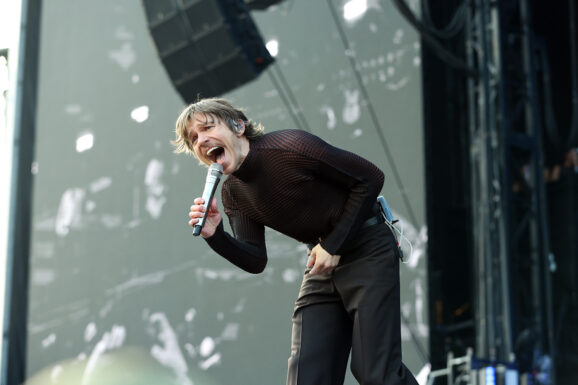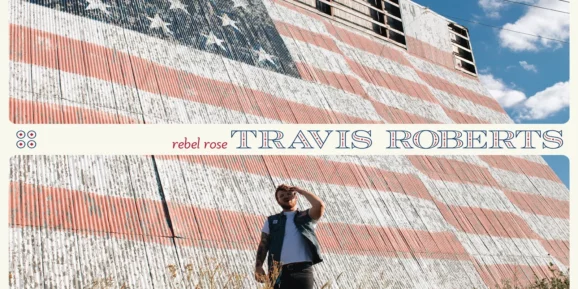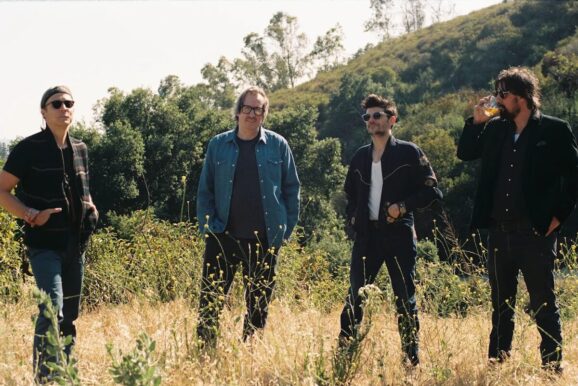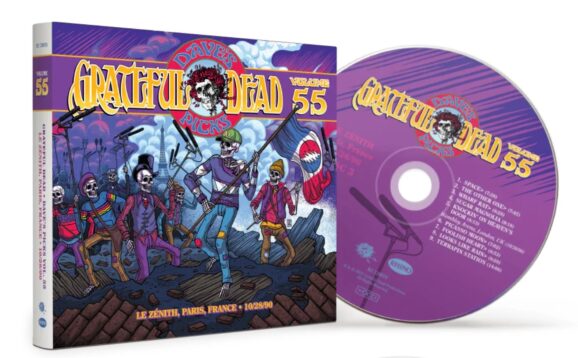With four and a half decades of hindsight, there appears a continuity within Grateful Dead’s Shakedown Street (released 11/15/78) that wasn’t so obvious at the time of its original release. A palpable undercurrent of rhythm permeates virtually all nine tracks and thirty-five or so minutes of its playing, the sources of which are both readily discernible and practical.
Upon signing with Arista Records two years prior, the iconic band was contractually required to work with an outside producer for its initial studio projects. In that light, the enlistment of Little Feat’s Lowell George seemed to be a more fruitful option than his predecessor on Terrapin Station Keith Olsen (whose claim to fame was collaborating with Fleetwood Mac on its commercial turnaround with Buckingham/Nicks in tow).
In retrospect, the eccentric guitarist/songwriter/producer didn’t provide the Dead all the guidance they required (for all manner of reasons subject to gossip), but he nevertheless supplied more than a little influence. When the group decided to exhume the Rascals’ “Good Lovin’,” once a live staple in the days of Ron “Pigpen’ McKernan, the percussion-heavy arrangement reminds of nothing so much as an outtake from the Feats’ 1973 Dixie Chicken.
Syncopation abounds elsewhere on Shakedown Street as well and not just on the title track. Due perhaps to Mickey Hart’s overt dissatisfaction with the aforementioned Olsen’s removal of a beat-oriented interval from the prior album, the rhythm devil’s contributions were much more prominent to this second release for Clive Davis’ label.
In addition to his co-write of “France” with Bob Weir and Robert Hunter, drummer Bill Kreutzmann’s partner contributed “Fire On The Mountain” a number that eventually became part of one of the group’s most durable and celebrated segues when coupled with “Scarlet Begonias.” The two co-authored the instrumental “Serengetti” as well, the exotic pulse of which offset to at least some degree the glib designation of this LP’s namesake cut as ‘disco Dead”
In reality, the lyrics for what would also become a reliable, less-faddish staple of this band’s repertoire, are accurately based on the lively activity around the locale in which the recording of this LP took place (captured in all its glory with cover art by underground comix artist Gilbert Shelton): Jerry Garcia lobbied to use Club Front for sessions after discovering it in rehearsal with the JGB.
But the impromptu fashion by which the titular leader of the Dead’s sway over the rest of the group for this purpose–plus the completion of the production by long-time collaborator John Kahn–may also account for the patchwork quality of Shakedown Street (as did concert appearances designed to subsidize the famous trip to Egypt that interrupted the studio timeline).
Without a sizable store of originals at hand, Garcia and Hunter thus rewrote the traditional tale of “Stagger Lee” and, upon a whimsical dare, composed the quasi-torch song “If I Had The World to Give;” a lighter touch than the leaden snare and bass drum would benefit the tune greatly, perhaps a Latin sway to accentuate its inherently lighthearted air.
Hard-hitting arrangements benefit Bobby’s spotlights though. The rhythm guitarist’s co-write with John Perry Barlow, “I Need A Miracle,” features one of his most forceful but focused lead vocals in complement to the slam of the band, while the update of another traditional in the form of “All New Minglewood Blues” gives ballast to a record all too lightweight too much of the time: Stephen Shuster’s tart horn work can’t redeem Donna Jean Godchaux’ mawkish composition “From The Heart of Me.”
The latter and her keyboardist husband Keith were in the early stages of mutual disenchantment with the Grateful Dead at the time of recording this tenth studio effort of the psychedelic warriors.’ The process of their eventual departure would not be complete until the next year, but at that point, Brent Mydland would join the group and aid in no small measure to distinguish the remainder of the ensemble’s tenure on Arista Records.
Besides participating in the mainstream breakthrough garnered with “Touch of Grey,” from 1987’s In The Dark, the late keyboardist/vocalist/songwriter was pivotal in reigniting the Dead’s group chemistry as documented on Dead Set and Reckoning. Preceding not only the fourth studio outing for the commercially-oriented record company founded by the one-time president of Columbia Records, but the bi-coastal, electric/acoustic concert collections also foreshadowed the simulation of a live show titled Without A Net: the seamless nature of which is the antithesis of the erratic Shakedown Street.







